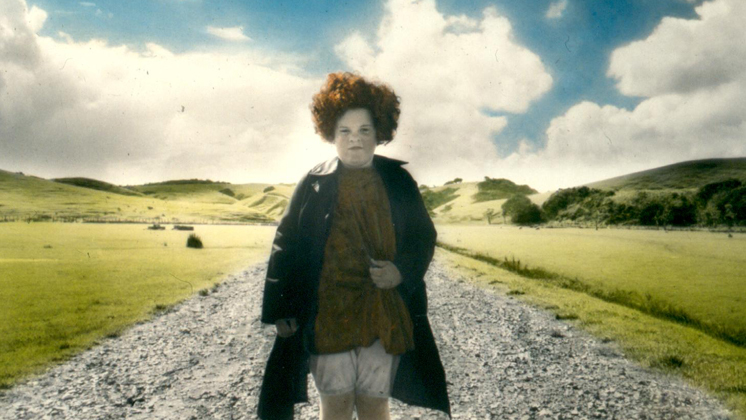An Angel at My Table is not only the story of one woman’s life — it is a celebration of voice, memory, and quiet resistance. Directed by Jane Campion and based on the autobiographies of New Zealand author Janet Frame, the film offers a profound look at how creativity and individuality can survive in a world that often misunderstands both.
Originally aired as a television miniseries and later released theatrically as a feature film, An Angel at My Table is split into three parts, chronicling Frame’s life from childhood through to early adulthood and her emergence as a writer of international acclaim. What makes this film so arresting is not only the unusual life it recounts, but the tender, visually poetic way in which Campion brings Frame’s world to the screen.

The first section portrays Janet as a sensitive, red-haired child growing up in rural poverty during the 1930s in New Zealand. She is awkward and dreamy, but not lacking in intelligence or curiosity. As she navigates a large and boisterous family, she also begins to form a relationship with books and words — an escape and a companion. Even from these early moments, the film is layered with a sense of displacement and quiet resilience.
The second chapter follows Janet into adolescence and early adulthood, where social awkwardness and inner turmoil are misread by the medical establishment as signs of mental illness. After suffering a breakdown and a suicide attempt, Janet is misdiagnosed with schizophrenia and institutionalized for eight years. She is subjected to electroconvulsive therapy, and narrowly avoids a scheduled lobotomy only because her first book is published just in time. It is one of the most harrowing parts of the film — not because it is loud or graphic, but because of its restrained depiction of institutionalization, where isolation and silence weigh heavier than overt violence.
The third section is where Janet begins to reclaim her life, traveling to Europe, discovering intellectual and emotional independence, and embracing her identity as a writer. It is not a triumphant return in the Hollywood sense; there are no speeches, no sudden romances, no victories over villains. Instead, there is a gradual unfolding — a woman finding her way through a life that never offered easy comfort, but which still held beauty and meaning.

Kerry Fox, who plays Janet in adulthood, gives a remarkable performance — quiet, alert, and filled with an inner life that’s often expressed through stillness rather than speech. She doesn’t perform Janet so much as embody her. Her portrayal honors the real Frame’s sensitivity without turning her into a stereotype of the "troubled genius." The performance avoids dramatization and instead captures the hesitant grace of someone who feels things more deeply than others and has never quite learned how to explain that.
Jane Campion’s direction is lyrical and intimate. The camera often lingers on landscape, water, hair, or hands — images that evoke emotional memory rather than plot. Campion allows scenes to breathe, giving space for silence and thought, reinforcing how much of Janet’s life was internal. The film’s pacing is deliberate, and its tone is gently melancholic, yet never hopeless. It is a work of incredible empathy.
An Angel at My Table isn’t just about overcoming trauma — it’s about learning how to live with the self. The title itself is suggestive of quiet grace, of unexpected beauty in lonely places. The "angel" may be writing, or imagination, or perhaps simply Janet’s ability to endure.

The film resonates with several central themes:
-
The Fragility of Identity: Janet’s misdiagnosis shows how misunderstood inner lives can be, especially for women who deviate from social norms. Her shyness and introversion are interpreted as illness. In a less poetic and more indifferent world, her story could have ended in silence.
-
Creativity as Survival: For Janet, writing is not merely an ambition; it is lifeline, expression, and salvation. It’s how she processes the world and survives its cruelties. The film is a profound meditation on what it means to be an artist when the world doesn’t recognize you as one — or worse, when it tries to erase you before you begin.
-
Womanhood and Isolation: Frame’s story is one of profound solitude. She is often on the margins, not by choice but by circumstance and temperament. Yet her isolation also gives her a unique vision, an ability to see and feel what others overlook.
Critically, the film received wide acclaim. It won the Grand Special Jury Prize at the Venice Film Festival and was heralded as a breakthrough for both Campion and New Zealand cinema. Viewers and critics praised it for its emotional honesty, its visual style, and its respectful handling of a life that could have easily been sensationalized.
What An Angel at My Table teaches us is that not all victories are loud, and not all heroes wear armor. Some carry notebooks. Some survive institutions. Some write quietly into the darkness until someone listens.

There is a particular kind of beauty in the film’s restraint — its refusal to turn trauma into spectacle, or intellect into elitism. Janet Frame emerges not as a tragic figure but as a luminous one — scarred, yes, but unbroken.
By the end, the audience understands that Janet’s story isn’t about being saved — it’s about learning to live truthfully in a world that prefers convention. It’s about bearing witness to oneself when no one else can.



